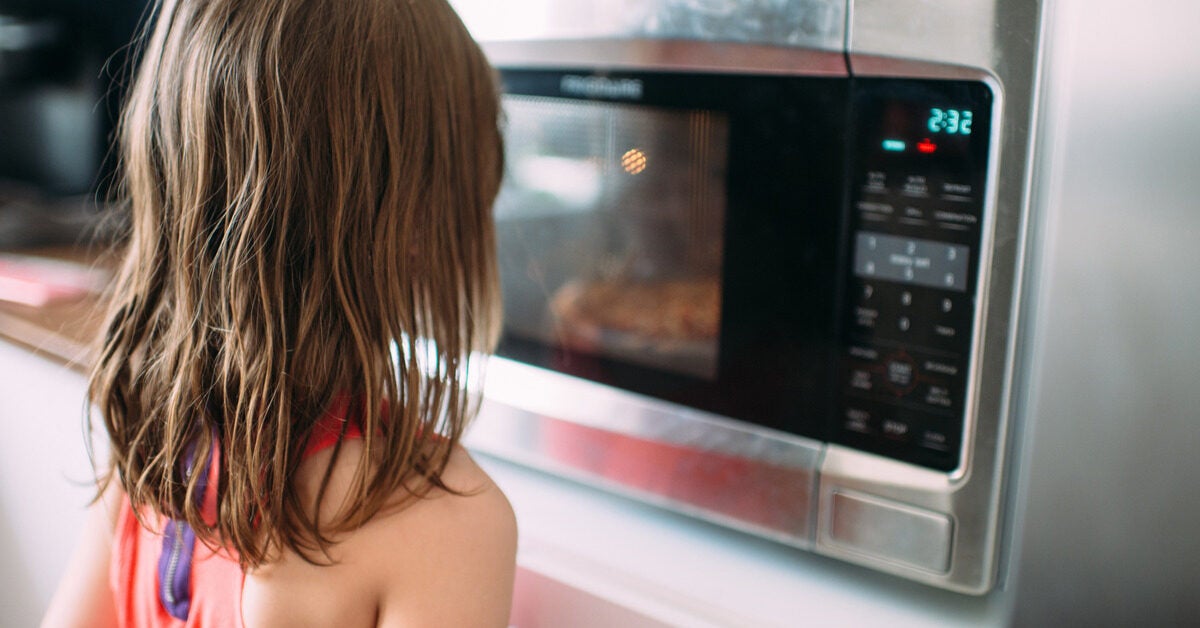There are a lot of people who believe that microwaving water changes its molecular structure. They say that it makes the water “unhealthy” and that it’s not safe to drink. But is this really true?
Does microwaving water actually change its molecular structure?
If you’ve ever wondered if microwaving water changes its molecular structure, the answer is yes! Microwaving water causes the water molecules to vibrate at a much higher frequency than they would if the water was heated on the stove. This can cause some of the water molecules to break apart and form new compounds.
However, these new compounds are still safe to drink.

Credit: www.healthline.com
How Do Microwaves Affect Water Molecules?
When microwaves hit water molecules, they make the molecules vibrate. This causes the water to heat up, and the vibrations can create tiny bubbles in the liquid. The bubbles cause the water to boil and turn into steam.
Does Microwaving Change Molecular Structure?
When microwaves heat up food, they cause the water molecules in the food to vibrate. This vibration creates friction, which generates heat. The heat then cooks or prepares the food.
Microwaves do not change the molecular structure of food, but they can change its physical structure, such as making it softer or causing it to explode.
What Happens to Molecules in a Microwave?
When you put food in a microwave, the molecules inside it start to vibrate. This is because microwaves cause water molecules to spin around really fast. This makes the molecules bump into each other and causes them to heat up.
The heat from these collisions then cooks your food.
Do Microwaves Destroy Molecules?
When microwaves pass through food, they cause the water molecules to vibrate. This generates heat and cooks the food. The microwaves do not destroy the molecules in the food; they simply cause them to move faster.
Neil deGrasse Tyson: Are Microwaves safe?
Microwaved Water Kills Plants
Did you know that microwaving water can actually kill plants? It’s true! If you give your plants microwaved water, they will eventually die.
Why does this happen? Well, microwaves cause water molecules to vibrate at a very high frequency. This vibration creates heat, and over time, it can damage plant cells.
In fact, studies have shown that just two minutes of microwave exposure can kill most plant cells. So if you want to keep your plants healthy, stick to giving them good old-fashioned tap water – it may not be as convenient, but your plants will definitely thank you for it in the long run!
Do You Ever Use a Microwave to Cook Food Quickly Ielts?
If you’re like most people, you probably use a microwave to cook food quickly every now and then. But did you know that there are some things you shouldn’t be microwaving? Here’s a list of 5 things you should never put in the microwave:
1. Metal – This one is pretty obvious. Metal objects will cause sparks and potentially start a fire in your microwave.
2. Glass – Contrary to popular belief, glass can actually shatter in the microwave if it’s not tempered properly. So it’s best to avoid microwaving glassware altogether.
3. Plastic – Some plastics can release harmful chemicals when heated, so it’s best to avoid microwaving plastic containers or wrap.
4. Styrofoam – Like plastic, Styrofoam can also release harmful chemicals when heated in the microwave.
5. Eggs – Believe it or not, eggs can explode in the microwave! So if you’re looking for a quick breakfast option, opt for something else instead of putting an egg in the microwave.
Why Does Water Absorb Microwaves?
Water is a polar molecule, meaning it has a slight positive charge on one side and a negative charge on the other. This gives water the ability to absorb microwaves. Microwaves are waves of energy that are attracted to charged particles.
When microwaves come into contact with water molecules, they cause the molecules to vibrate. This vibration produces heat, which is why microwave ovens cook food so quickly.
Water isn’t the only substance that can absorb microwaves – metals can too.
In fact, most materials will absorb at least some microwaves. However, water is unique in its ability to both reflect and absorb microwaves. This means that it can be used to both transmit and receive signals from microwave devices such as radar and cell phones.
Do Microwaves Change the Molecular Structure of Food?
We all know that microwaves can heat up food quickly and easily. But did you know that microwaves can actually change the molecular structure of food? That’s right – microwaves can cause molecules in the food to break down and rearrange themselves.
So what does this mean for the safety of microwave cooking? Well, some experts believe that microwave-cooked food may not be as nutritious as food cooked in other ways. That’s because the process of microwave cooking can destroy some of the nutrients in food.
So if you’re concerned about getting all the nutrients your body needs, you may want to stick to traditional cooking methods like stovetop or oven cooking. However, if you’re looking for a quick and easy way to cook your meals, then microwaving is still a perfectly safe option.
Conclusion
Yes, microwaving water does indeed change its molecular structure. The molecules of water are polarized, meaning that they have a positive and negative end. When microwaves hit water molecules, they cause them to rotate so that the negative end is pointing up and the positive end is pointing down.
This causes friction between the molecules, which generates heat.

Asma Sheikh is a food and recipe blogger who loves to cook and bake. Her blog, “Kitchen Crunch”, is all about sharing her recipes with the world. Asma has been cooking and baking since she was a little girl, and she loves to share her passion with others. She believes that anyone can cook, no matter their skill level, and she enjoys helping others to learn new techniques and recipes.

